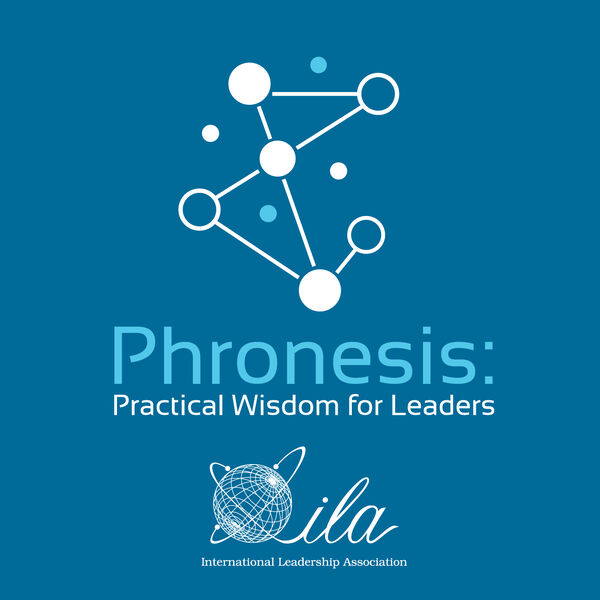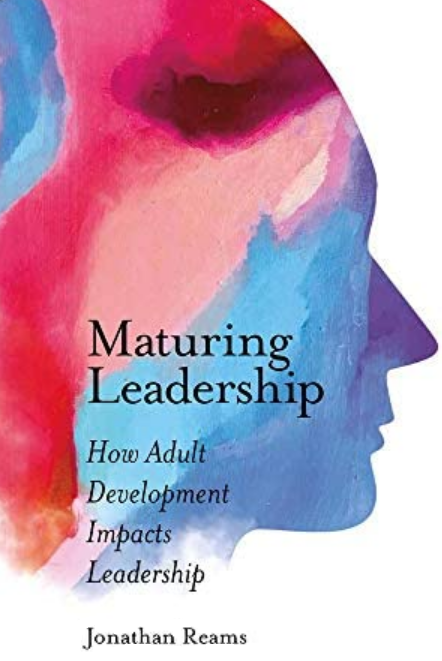
To prepare this brief reflection piece, I reread the introduction to Maturing Leadership that I wrote a little over three years ago. It struck me as amusing how easy it is to forget things that we write or say, (or showed I have a terrible memory), and encountering them later, see both the limitations as well as the points that seem to make a lot of sense.
 I also spent a few days listening to the edited versions of the podcast conversations Scott Allen and I had with many of the contributors to the book. (You can find these on the Phronesis site. Eternal thanks to Scott for suggesting this series and inviting me to co-host the conversations). It was fascinating for me how listening to a conversation I had participated in (I’m not in the habit of recording and listening to myself) would periodically catch my attention, make me pause the recording and take note of some new connection or insight the conversation brought to my attention.
I also spent a few days listening to the edited versions of the podcast conversations Scott Allen and I had with many of the contributors to the book. (You can find these on the Phronesis site. Eternal thanks to Scott for suggesting this series and inviting me to co-host the conversations). It was fascinating for me how listening to a conversation I had participated in (I’m not in the habit of recording and listening to myself) would periodically catch my attention, make me pause the recording and take note of some new connection or insight the conversation brought to my attention.
These starting points for my current reflections make me even more aware of how our learning is an ongoing process of enriching connections. These connections show up as neural networks in the brain and are in the business of anticipating and modeling the world to enable us to make sense, meaning and take action. As the growing popularity (and at times misconceptions) of neuroplasticity makes clear, we can and need to dynamically grow as well as prune these neural networks on an ongoing basis to keep up with the world. Thus, I learn more every time I encounter these ideas and conversations.
It is in this context that I am reflecting on this next phase of the project around this book, Maturing Leadership. First published in the spring of 2020 as an academic priced hardcover, in the spring of 2022 it came out in a trade priced paperback,  making it more accessible to a wider audience. Now we have this podcast series of ten episodes, featuring most of the contributors to the book.
making it more accessible to a wider audience. Now we have this podcast series of ten episodes, featuring most of the contributors to the book.
This project sits within a larger context of a growing community of researchers, practitioners and pracademics engaging in conversations about leadership, maturity models (i.e. adult development), and how they relate. This takes many forms and is found in many domains of discourse. I’m always curious about finding related discussions going on in other fields of study that end up pointing in the same direction, just in a different discourse. I also find that this conversation is getting more robust as more cross-pollination happens and it encounters healthy critiques that help us make more explicit the complexity, nuances and dynamic nature of maturity and leadership.
Given all of this background, what are my reflections on this podcast series? First and foremost, it is a long journey. Many of us, myself included, at some point encountered one of these theories and had an intuitive grasp of a simple stage description as a powerful lens to make sense of differences we encounter in people. Gradually, we can move towards a robust understanding of the more fundamental, underlying processes developmental theories attempt to describe. We can also encounter the contextualization of these processes in relation to their limits and influences from and on other theoretical lenses.
Today, I believe more people are encountering what I would describe as a more mature introduction to adult development. Efforts such as this book project and podcast series can introduce people to adult development and its impact on leadership starting with the benefit of contextualizing the field more robustly. It also enables people to see right away that this is not a simplistic set of theories, but a rich and developing suite of interconnected and dynamically evolving inquiries into better understanding this aspect of how people and these facets of their experience are central to our understanding of leadership.
Another reflection is how exciting it is to see the emergence of this ‘next generation’ of research and practice in this intersection. My early exposure focused on simply absorbing and understanding how seminal figures brought these things together. Eventually, new questions come into focus and seeing the constellation of work gathered here, (recognizing it is only a small sample of what is going on), I’m grateful for how so many people have taken on the challenge of expanding this body of knowledge and practice.
Looking forward from these reflections, I see a few issues in focus. One is how the wider community deals with the use of the term ‘vertical’. Vertical leadership development is gaining use as a popular way to make a simple distinction. It aims to highlight what appears to many as an important difference between vertical development and learning as knowledge acquisition, behavioral skill training or ‘horizontal’ growth. While convenient and easy for the non-initiated to make an initial meaning of, there are serious limitations to this. (You can read a bit more of some of my thoughts on this LinkedIn post here). There is a tension between accessibility and the simplifications necessary to support this, with the nuances and complexities involved being less accessible and even turning off people from engaging.
Another is how to address or engage critical perspectives and discussions that call into question underlying premises of adult development. There are many good reasons to widen the theoretical lenses used in how we understand development. Doing that in a constructive manner, while also being able to suspend our early adopted assumptions from the theories and disciplines we have entered into this with is not so simple or straightforward. I think there are good efforts underway in many conversation forums that will contribute to the ongoing maturation of discourse in this area. While much of this is more broadly dealing with adult development models themselves, it will have implications for how we understand and evolve our leadership practices as well.
In closing, I also notice a growing energy to try and link more of these connections and give voice to what I perceive from the perspective of sitting with all these connections, intersections and engagements. It has been an ongoing aim, mostly unfulfilled, to do more writing, so I’m hoping this helps cross the threshold from good intentions to more fingers on the keyboard.
